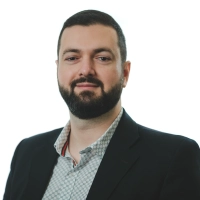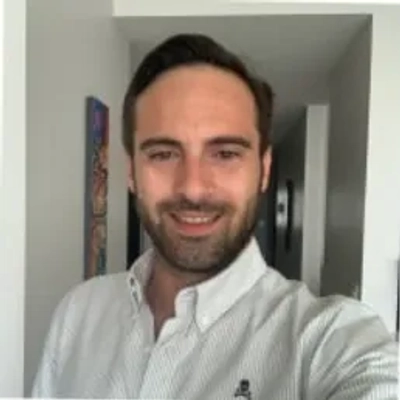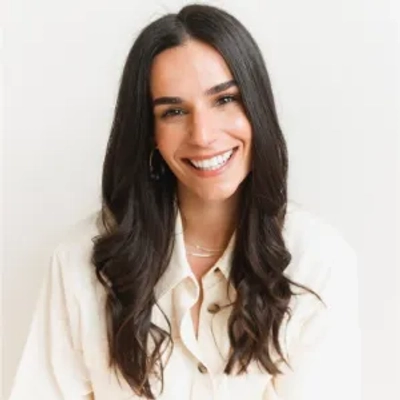How Business Coaches Inspire Creative Solutions to Business Challenges
Discover innovative strategies to overcome business challenges with insights from industry experts. This article explores creative solutions that can transform your business operations and drive growth. From custom tools to strategic partnerships, learn how to implement these expert-backed ideas to elevate your business to new heights.
- Build Custom Tools for Efficient Growth
- Align Business with Coaching Insights
- Restructure Offers to Attract Better Clients
- Implement Cross-Functional Ownership Pods
- Develop Color-Coded Priority Scheduling System
- Simplify Onboarding with Visual Communication
- Scale Impact Through Knowledge Productization
- Showcase Strategic Thinking to Attract Clients
- Create Systems Honoring Personal Rhythms
- Transform from Provider to Strategic Partner
- Introduce Flex Windows for Staff Well-Being
- Design Pre-Qualification Quiz for Lead Quality
- Reframe Customer Obstacles for Innovative Solutions
- Develop Vendor Integration Blueprint
- Streamline Onboarding with Digital Guide
- Foster Community Through Continuous Feedback
Build Custom Tools for Efficient Growth
One of the most valuable insights I gained from working with a business advisor/coach was realizing that I could actually build my own tools. At the time, our growth was outpacing our ability to staff up efficiently, and I was stuck in the mindset that I just needed to solve the growth problem by hiring more people. She helped me zoom out and see that I didn't just have to rely on manual processes or off-the-shelf tools, and that we were relying too heavily on human capital instead of designing for efficiency.
That sparked the idea for our own custom tech build, which now powers everything from internal workflows to billing and matching clients with the right team. It's allowed us to keep our team lean while doubling down on quality and speed. This shift helped us break out of the "scale = hire" mindset and gave us the freedom to grow without letting fixed costs balloon.
Align Business with Coaching Insights
A few years ago, I hit a wall. I was coaching founders, consulting on brand and marketing, running campaigns, and trying to build my own brand all at once. On paper, the business looked solid. I had clients and momentum. However, I knew something was off. The business was busy but not aligned. That is when I started working with coaches—not for more tactics, but for clarity.
For IV20 Spirits, our terpene-inspired vodka brand, we needed to look credible. We needed people to take us seriously when they looked us up. So we brought in a coach, Heidi Cortez, who had experience in branding, PR, and social media. I already understood traditional marketing, but I lacked experience in public relations and the kind of visibility that builds brand authority. She helped me understand how to position a business in a way that connects with a mass market. That helped us grow IV20, but it also gave me tools that I now use with clients and for my own brand.
Later, I worked with another coach, Dale, who helped me navigate the shift into the consumer packaged goods industry. He was especially helpful when I hit a ceiling trying to grow my business partner into a stronger leadership role. We had been making steady progress, but we were approaching a key investor milestone and needed a breakthrough. Dale helped us get there. He also helped sharpen my thinking around deal structures and investor presentations.
The biggest shift came when I took a step back and looked at what was really working across all of my ventures. I realized the value was not in the tasks or deliverables. It was in the clarity, confidence, and strategic direction I was helping others find. That insight led me to restructure Steven Mitts Services and focus on investor strategy, founder performance, and brand positioning.
The lesson is simple. You do not always need to do more. You need to focus on what actually moves the needle. Real growth comes when you pause, ask better questions, and adapt with purpose.
About the Founder
Steven Mitts is the principal of Steven Mitts Services, where he empowers founders and startups to accelerate growth through systems-driven execution and entrepreneurial coaching. Drawing from a diverse background in military logistics, enterprise technology, and consumer brand development—including his role as founder of IV20 Spirits—Steven equips early-stage businesses with the tools and strategies they need to scale effectively.
Learn more at stevenmitts.com

Restructure Offers to Attract Better Clients
When I hit a plateau in scaling my agency, my business coach helped me see that the real issue wasn't leads or strategy, but rather my pricing and offer structure. I was undercharging and saying yes to too many custom projects that drained resources without long-term value. Together, we rebuilt the offer into a productized service with clear deliverables, fixed pricing, and a minimum engagement period.
What changed everything was how we framed the value. Instead of selling time or deliverables, we positioned the service around outcomes and tied it to client growth goals. That instantly attracted better-fit clients who respected the process and were easier to retain. Within three months, revenue jumped, and I was able to cut down on scope creep and stress. It wasn't some big complex fix, but it took an outside perspective to help me stop overcomplicating the business and focus on what actually scales.

Implement Cross-Functional Ownership Pods
A few years ago at Zapiy, we hit a plateau that I hadn't anticipated. Our product was strong, the market was responding well, and our early growth looked promising—but internally, something was amiss. The team was operating in silos, product timelines were slipping, and decision-making felt slower than it should have. On paper, things looked fine. But as a founder, I could sense the momentum fading.
That's when I started working with a business coach—not for tactical advice, but to help me gain some perspective. One of the biggest insights we arrived at together was that **we hadn't outgrown our product; we'd outgrown how we operated as a team.** The systems that worked for a five-person startup didn't scale when we were approaching 20 employees. I was still at the center of too many decisions, and the team lacked the clarity or structure they needed to take real ownership.
With my coach's guidance, we designed a lightweight framework we called "Ownership Pods." Instead of rigid departments, we grouped cross-functional teams around specific outcomes—like activation, retention, or merchant growth. Each pod had a lead, clear KPIs, and decision rights within their zone. It gave people autonomy, reduced bottlenecks, and allowed me to shift from being the daily problem-solver to the strategic enabler.
The creative part wasn't the structure itself—it was how we implemented it. My coach challenged me to *co-create* it with the team, not just announce it from the top down. We held open sessions where team members helped shape the framework, named the pods, and discussed what success should look like. That made all the difference in buy-in and ownership.
Within three months, our speed increased, and team engagement improved noticeably. More importantly, I started seeing people step up—not because they were told to, but because they could see how their work directly impacted the company's progress.
That experience taught me that a good coach won't give you a blueprint—they'll hold up a mirror and help you design the right solution for your specific inflection point. In our case, the fix wasn't more hustle—it was more clarity and shared ownership. And that turned out to be exactly what we needed.
Develop Color-Coded Priority Scheduling System
A few years ago, I hit a wall with scheduling. We were growing rapidly, booking more roof jobs across Houston, but my calendar looked like a war zone. Crews were either double-booked or sitting idle with nothing to do. I was stressed, homeowners were frustrated, and jobs were slipping through the cracks.
I brought in a business coach—not one of those "rah-rah" types, but someone who had worked with trades before. He didn't pitch me some app or CRM right away. The first thing he said was, "Your bottleneck isn't your team. It's how you're running the board."
Together, we built a color-coded, priority-based scheduling system using nothing more than Google Calendar and a shared Google Sheet. We grouped projects based on complexity, weather dependency, and crew availability. Every project was assigned a "lead type," and every lead had a status code that was updated daily by the office.
Here's the part that really changed the game: we added a buffer window between each job. One day minimum, no matter how "small" the job was. That alone reduced stress, allowed for last-minute inspections or supply issues, and gave our crews breathing room without sacrificing output.
The result? Fewer reschedules, better customer communication, and tighter control over manpower. It wasn't about throwing money at new tools. It was about seeing the problem clearly with an outside perspective and applying a simple fix that fit our rhythm.
That change made our operations smoother and our customers happier. Sometimes the smartest solutions are the ones that simplify, not complicate.
Simplify Onboarding with Visual Communication
One of the most valuable experiences I had with a business coach was when we hit a roadblock in our vendor onboarding process. The manual method we used couldn't keep up as our platform developed. We noticed delays in the listings of agencies going up, which hurt both income and the user experience. At first, we thought the answer had to be technical; do more automation and produce things faster. Instead, the coach told us to take a step back and look at the whole experience from the user's point of view.
We discovered that the problem was not about speed, but clarity. The delays happened because the agencies didn't find the instructions clear. Since they didn't understand what they had to do, they either took too long or dropped out completely. So, we simplified the onboarding process by replacing long blocks of text with short videos and visual cues. We also included proactive communication at important points to cut down on drop-off.
This led to 35% more people finishing onboarding, and it took a lot less time to post new ads. Sometimes the best way to solve a problem is to make processes more human and improve how people communicate. I still use that lesson in other sectors of the business.

Scale Impact Through Knowledge Productization
When a business coach pointed out that I was repeating myself with clients, it was a lightbulb moment. They encouraged me to productize my knowledge by creating an ebook, a quiz, and offering affordable group coaching sessions. This shift allowed me to scale my reach and help more people, while also making my business more sustainable.

Showcase Strategic Thinking to Attract Clients
One challenge we faced at Saifee Creations was attracting the right kind of clients. We were getting leads, but many didn't align with the depth of strategy and creative thinking we offer. A business coach helped us see that the problem wasn't the work — it was how we were positioning it.
Together, we developed a solution: stop pitching services and start showcasing thinking. We created a "Creative Insights Deck" that broke down our approach to branding using real, anonymized case studies. Instead of talking about logos and websites, we walked prospects through how we uncover brand DNA and build narratives that drive engagement.
This subtle shift turned into a powerful filter. It attracted clients who valued depth and discouraged those looking for quick fixes. It also empowered our team to lead conversations with clarity and confidence.
That solution reminded me that creativity isn't just for design — it belongs in how you position, communicate, and grow your business too.

Create Systems Honoring Personal Rhythms
In the early stages of building my brand, I found myself constantly producing and always in "output" mode, which didn't feel authentic to me at all. I was overextending my energy trying to do what everyone suggested I do to keep up and stay visible, but it left little space for creativity, play, or rest. My business coach helped me realize that the real issue wasn't productivity, but how I was relating to time and using it in my business. She introduced me to the concept of time levels: neutral, active, and passive. I realized I was starving for more neutral time, such as reading, meditating, and simply being. With her guidance, I started creating systems that honored my cyclical rhythms, like batch-recording my podcast and automating my content to protect that space and free up more time. This allowed me to stay rooted in my value of keeping no rigid "to-do" list while expanding my work with more ease. I started seeing strategy as energetic architecture and something that supports creativity and harmony with wealth, rather than something that restricts it.

Transform from Provider to Strategic Partner
One of the biggest challenges we faced in the early days of ChromeQA Lab was client retention. While we were delivering technically sound QA work, we noticed a recurring pattern: clients were completing short-term projects and then disappearing, even when they were happy with the output. It wasn't a quality issue; it was a relationship and strategic engagement problem.
I worked closely with a business coach who challenged me to rethink our value beyond test cases and bug reports. He pushed me to stop thinking like a vendor and start positioning ChromeQA as a strategic QA partner. That required a mindset shift not just in me, but across the company.
We co-developed something we called the "QA Maturity Blueprint" - a free consultative model we offered new clients. It assessed their current QA processes across people, automation, scalability, and release velocity. Instead of pitching services, we delivered insights, essentially giving away value upfront. This turned passive buyers into engaged collaborators.
As a result, our average client engagement period grew from 3 months to over a year. Clients didn't just stay longer; they involved us earlier in product planning cycles. That pivot, initiated with the help of my coach, transformed ChromeQA from a testing provider to a long-term QA ally, which is how we've scaled sustainably.

Introduce Flex Windows for Staff Well-Being
One challenge I faced early on at Ridgeline Recovery was staff burnout and inconsistent team performance during high-admission months. We were growing rapidly, and while that's excellent on paper, it nearly broke our team's spirit. People were exhausted. Morale was unstable. Clients still required care, but behind the scenes, my team was operating on minimal energy.
That's when I brought in a business coach — not just any consultant — but someone who understood the emotional weight of leading in the behavioral health space.
Together, we reconstructed our internal workflow.
The innovative solution? We developed what we now call "The Flex Window." Every full-time staff member gets a built-in weekly flex shift — time to decompress, handle administrative tasks, or attend personal appointments without using PTO. It's scheduled, respected, and protected.
It wasn't just about reducing workloads. It was about providing people with breathing room in a high-stress environment — while still maintaining structure and accountability. We also implemented monthly pulse checks — anonymous, 3-question surveys to monitor energy, clarity, and engagement.
The result? Staff retention stabilized, absenteeism decreased, and we actually observed performance improvements. Clients noticed, too. The energy in the building shifted — becoming calmer, more connected, and less chaotic.
Here's what I learned:
Sometimes your team doesn't need a raise — they need a reset. And sometimes as a leader, you need an outside perspective to help you see what you're too deeply involved in to notice.
Design Pre-Qualification Quiz for Lead Quality
A business coach once helped me tackle a common issue: too many leads, not enough qualified ones. We were spending a significant amount on advertisements, but the sales team was overwhelmed and frustrated. The coach suggested a pre-qualification quiz that felt more like a helpful tool than a filter. We designed it to guide users through their pest issue and route them to the right service—or inform them if we weren't the right fit.
This approach not only reduced our unqualified leads by half but also increased conversions because prospects felt more confident when they reached a human. That idea came directly from slowing down with the coach and asking, "How do we protect the team and serve the customer better?"
As for onboarding, one specific step I swear by is the kickoff checklist we send immediately after a sale closes. It outlines exactly what happens next, who their main point of contact is, and what we need from them to get started. That single email eliminates 90% of the confusion and sets a professional tone right from the beginning.
Reframe Customer Obstacles for Innovative Solutions
Several years ago, while advising a fast-growing e-commerce brand, I faced a challenge that required creative problem-solving and benefited significantly from my work with a business coach. The company had ambitious growth targets but was struggling with stagnant online sales despite heavy investment in traffic acquisition. The leadership team felt stuck, suspecting the issue was a technical conversion problem or ineffective ad spend. At first glance, the data seemed to support this, but experience told me it was likely more complex.
My business coach challenged me to re-examine the problem from outside the usual e-commerce playbook. Through candid conversations, we reframed the challenge: instead of asking "How do we get more people to buy?" we asked, "What is fundamentally preventing our customers from acting?" This shift in perspective was subtle but crucial.
I initiated deep-dive interviews with recent customers and those who abandoned their carts, rather than relying solely on analytics dashboards. Patterns emerged: customers liked the products but felt uncertain about sizing, returns, and post-purchase support. The friction was rooted in trust and clarity, not just site mechanics or promotions.
With my coach's input, I proposed a solution that combined operational changes and customer experience innovation. We launched a live video chat feature with real product experts during peak hours, redesigned the returns policy for transparency, and created a series of post-purchase follow-ups to reassure buyers. This wasn't just a technical fix, but a cultural one - it required retraining staff, shifting KPIs, and elevating the voice of the customer in decision-making.
Within months, conversion rates improved by double digits, and repeat customer rates climbed. More importantly, the team learned to interrogate their own assumptions and look beyond surface metrics. This experience reinforced something I now emphasize when mentoring leaders and consulting for ECDMA members: often, the real obstacle is not found in the data, but in the questions we fail to ask about our customers' experience. Creative solutions emerge when you combine operational rigor with genuine curiosity, guided by the right outside perspective.
Develop Vendor Integration Blueprint
Problem: Our small e-commerce business faced significant delays and customer dissatisfaction due to unpredictable supply chain issues and a lack of real-time inventory visibility. We relied on manual tracking, leading to frequent stockouts and miscommunications.
Creative Solution: Working with a business coach, we developed a "Vendor Integration Blueprint." The coach pushed us to think beyond off-the-shelf software and consider a phased, collaborative approach. We started by identifying our top five critical vendors and, with the coach's guidance, negotiated direct API integrations with their inventory management systems. This allowed for automated, real-time stock level updates and order tracking directly on our platform.
The solution was arrived at through iterative brainstorming with the coach, who emphasized leveraging existing vendor capabilities rather than building a complex system from scratch.

Streamline Onboarding with Digital Guide
Redesigning the client onboarding process streamlined operations and improved retention rates. Introducing a step-by-step digital guide clarified expectations and reduced confusion for new clients. Automating follow-ups with personalized emails ensured consistent communication and built trust. Implementing feedback loops allowed for continuous improvement based on client insights. This collaborative solution enhanced efficiency and elevated the overall client experience.
The challenge was high client drop-off during the onboarding phase, stemming from unclear processes and inconsistent communication. Analyzing client feedback with the business coach revealed pain points and areas for improvement. Brainstorming sessions led to the idea of a digital onboarding guide paired with automated follow-ups. Testing the solution with a pilot group provided valuable insights for refinement. The final approach addressed client concerns, creating a seamless and engaging onboarding experience.

Foster Community Through Continuous Feedback
That one conversation shifted my whole mindset. I started asking our team more questions, listening more closely to our members, and creating space for real input. We began holding feedback sessions, trialing new class formats with member groups, and inviting honest conversations about what was working and what wasn't. And the energy started to change. People felt heard. Instructors felt more ownership. Members felt more invested. The studio became more than just a space to work out; it became a place people felt proud to be part of.
I still think about a member named Lila, who'd bounced between gyms for years. She told me that most places made her feel like she was always behind, like fitness was a race she couldn't win. But after we introduced our Recovery Lab, something she and others had been quietly asking for, her perspective changed. She said, "I finally felt like I belonged. Like I could grow here, not just try to keep up." That stuck with me. Because that's what we're really doing: helping people build lives they feel strong in, not just bodies that look a certain way.
Now, feedback isn't something we check off a list; it's baked into who we are. We evolve with our community, not just for them. That shift has made Studio Three more grounded, more human, and honestly, more effective. It reminded me that leadership isn't about having all the answers; it's about listening well enough to ask better questions.








